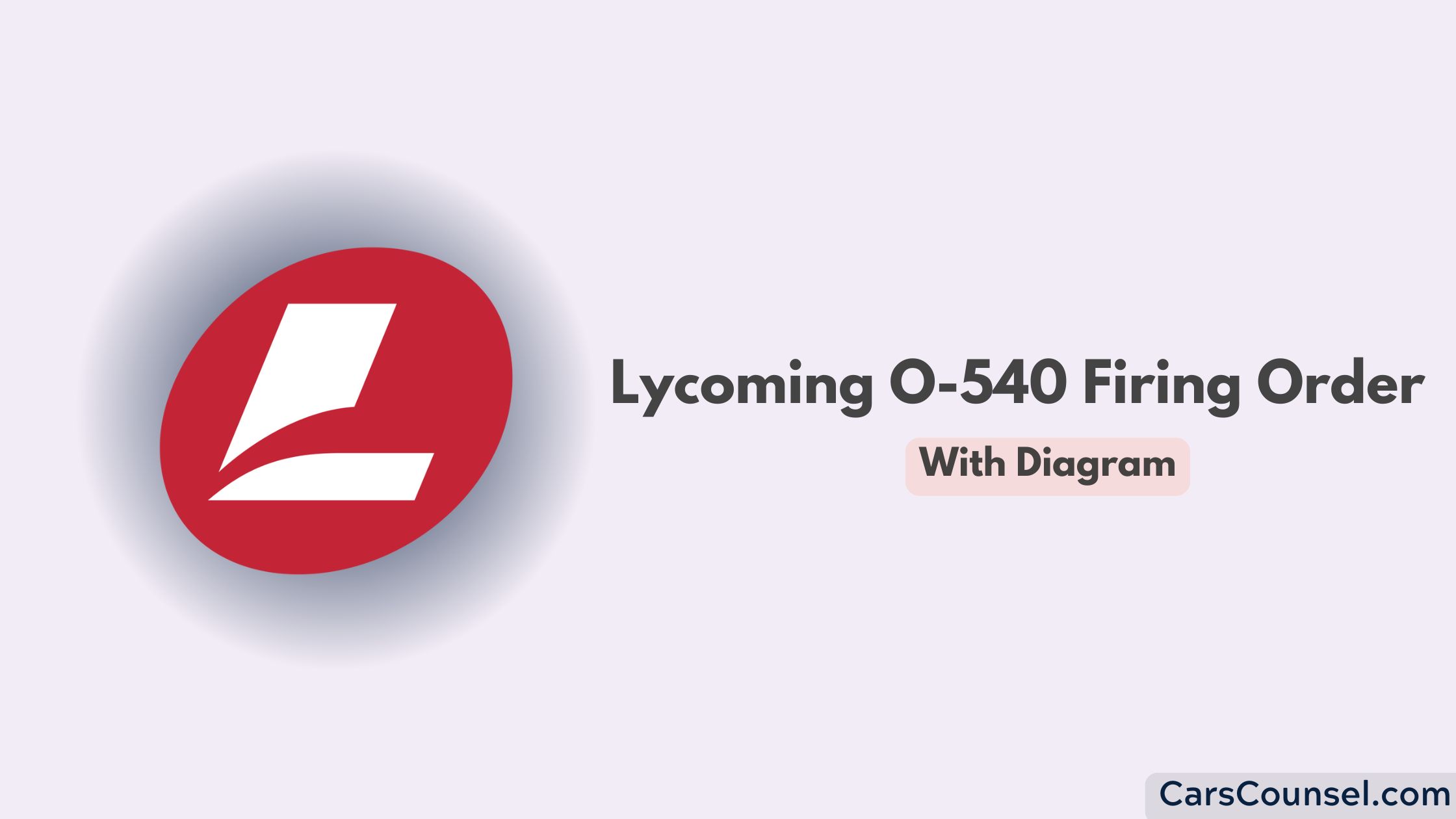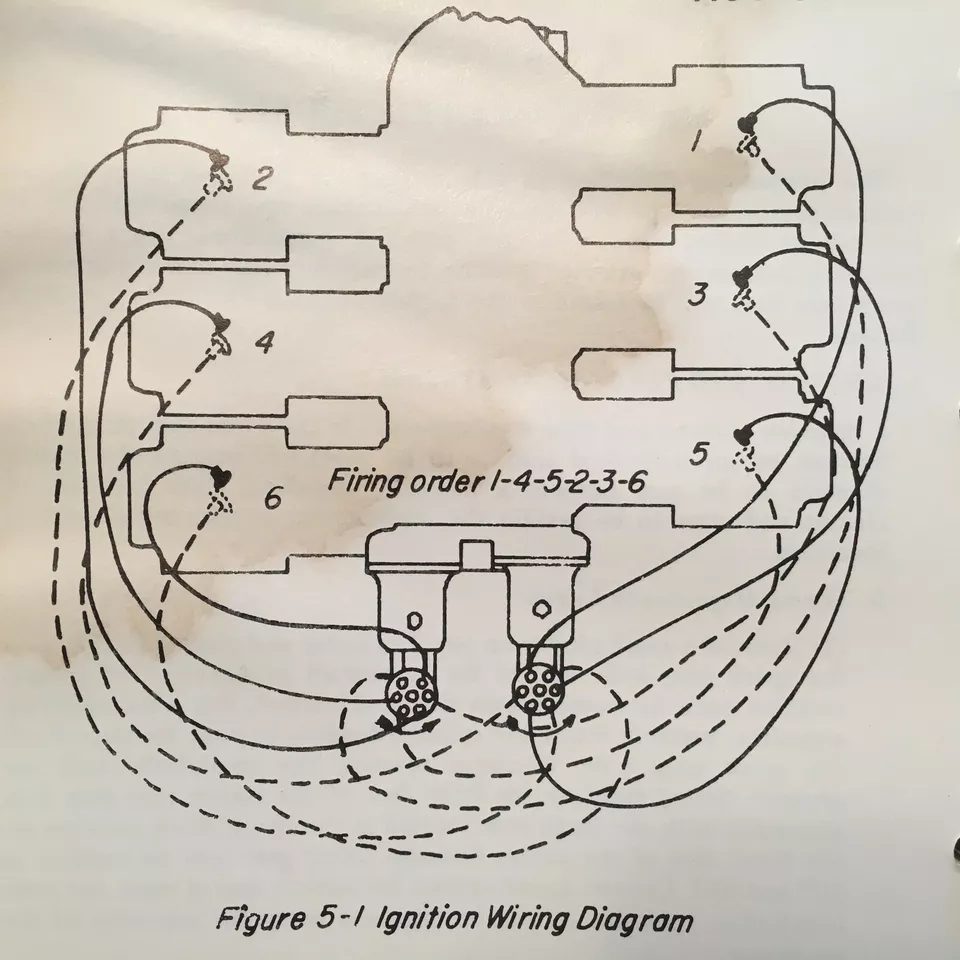The Lycoming O-540 is a six-cylinder, horizontally opposed, air-cooled engine that has been a trusted powerplant in general aviation for decades. Known for its performance, durability, and reliability, the O-540 is used in popular aircraft such as the Piper Cherokee Six, Cessna 182RG, and Beechcraft Duchess. A critical part of its smooth operation and power delivery is the firing order, which ensures that the cylinders ignite their air-fuel mixture in a specific sequence.
In this article, we will explore the firing order of the Lycoming O-540, its importance, and how it contributes to engine functionality. Whether you’re a pilot, mechanic, or aviation enthusiast, understanding this aspect of the O-540 is key to maintaining and optimizing its performance.

Quick Navigation
The Lycoming O-540 Firing Order
The firing order for the Lycoming O-540 engine is: 1-4-5-2-3-6

What Is a Firing Order?
The firing order is the sequence in which an engine’s cylinders fire, or ignite, the air-fuel mixture. This controlled combustion drives the pistons, which in turn rotate the crankshaft. The firing order is carefully designed to ensure balanced power delivery and minimize vibrations.
Why the Firing Order Matters
- Smooth Operation: Proper sequencing reduces vibrations and helps the engine run evenly.
- Performance: Ensures consistent power delivery for reliable performance during flight.
- Efficiency: Optimized combustion timing maximizes fuel efficiency and reduces emissions.
- Durability: Distributes stress evenly across the engine, prolonging the life of internal components.
Overview of the Lycoming O-540 Engine
The Lycoming O-540 is part of a family of horizontally opposed, air-cooled engines. With a displacement of 540 cubic inches, it is larger than its four-cylinder counterparts (like the O-320 and O-360) and delivers more power, typically in the range of 230 to 350 horsepower depending on the model and application.
Key Features of the O-540
- Six Cylinders: Arranged in a horizontally opposed layout, with three cylinders on each side.
- Air-Cooled: Utilizes airflow to regulate engine temperature.
- Four-Stroke Cycle: Follows the intake, compression, power, and exhaust strokes.
- Cylinder Numbering:
- Right Bank: Cylinders 1, 3, and 5 (front to back).
- Left Bank: Cylinders 2, 4, and 6 (front to back).
Identifying the Firing Order
Understanding the firing order is essential for diagnosing engine issues, performing maintenance, and ensuring proper assembly. Here’s how you can identify and verify the firing order:
Check the Engine Manual
The engine manual provides detailed information about the O-540’s firing order, cylinder numbering, and timing specifications.
Locate Cylinder Markings
Cylinder numbers are typically stamped on the engine block or visible near the spark plugs, making it easy to identify their positions.
Use Timing Tools
Timing marks on the crankshaft and magneto can help confirm the firing sequence during maintenance or repairs.
Symptoms of Incorrect Firing Order
An incorrect firing order can cause noticeable problems that affect the performance, reliability, and safety of the engine. Here are the most common symptoms:
Common Symptoms
- Engine Misfires: Irregular combustion disrupts power delivery and causes the engine to run unevenly.
- Rough Operation: Excessive vibrations or rough running can indicate a problem with the firing sequence.
- Power Loss: A disrupted firing order can reduce overall engine power, impacting aircraft performance.
- Increased Fuel Consumption: Inefficient combustion leads to higher fuel usage and increased emissions.
- Excessive Heat: Misfiring cylinders can cause localized overheating, risking engine damage.
Causes of Incorrect Firing Order
- Misconnected Ignition Wires: Spark plug wires routed to the wrong cylinders disrupt the sequence.
- Faulty Magneto Timing: Misaligned magnetos can cause incorrect ignition timing.
- Worn Components: Faulty spark plugs, ignition leads, or magnetos can interfere with proper combustion.
Diagnosing and Fixing Firing Order Problems
If you suspect a firing order issue in your Lycoming O-540, follow these steps to diagnose and resolve the problem:
Diagnostic Steps
- Inspect Spark Plug Wires: Verify that each wire is connected to the correct cylinder in the 1-4-5-2-3-6 sequence.
- Check Magneto Timing: Use timing marks to ensure that the magnetos are synchronized with the crankshaft.
- Perform a Compression Test: Ensure all cylinders have sufficient compression for proper combustion.
- Use a Timing Light: Confirm ignition timing using a timing light and compare it to the manufacturer’s specifications.
Fixing Common Issues
- Reconnect Ignition Wires: Ensure spark plug wires are routed correctly according to the firing order.
- Adjust Magneto Timing: Align the magnetos with the correct crankshaft position for accurate ignition.
- Replace Faulty Components: Install new spark plugs, ignition leads, or magnetos if they are damaged or worn.
Preventative Maintenance for Firing Order Reliability
Maintaining the correct firing order is critical for the Lycoming O-540’s long-term performance. Follow these preventative tips to keep your engine running smoothly:
Regular Inspections
- Check spark plugs, ignition leads, and magnetos during routine maintenance.
- Look for loose connections, wear, or signs of corrosion.
Replace Components as Needed
- Replace spark plugs and ignition wires according to Lycoming’s recommended maintenance schedule.
- Use OEM parts to ensure compatibility and reliability.
Verify Timing
- Periodically check and adjust magneto timing to maintain accurate ignition.
- Perform timing checks during scheduled maintenance or after any significant engine repairs.
Engines with Similar Firing Orders
FAQs About the Lycoming O-540 Firing Order
Can I Change the Firing Order?
No, the firing order is fixed by the engine’s design and crankshaft configuration. Altering it would require extensive modifications.
What Happens If the Firing Order Is Incorrect?
An incorrect firing order can cause misfires, power loss, rough operation, and potential damage to internal components.
How Can I Verify the Firing Order?
Refer to the engine manual, inspect cylinder markings, and use timing tools to confirm the firing sequence.
Is the Firing Order the Same for All Lycoming Engines?
No, while many Lycoming engines share similar firing orders, variations exist depending on the model and configuration.
Conclusion
The 1-4-5-2-3-6 firing order is a fundamental part of the Lycoming O-540 engine’s operation, ensuring smooth performance, balanced power delivery, and efficient combustion. Understanding this sequence is essential for maintaining and troubleshooting the engine, as well as ensuring safe and reliable flight performance.
By following proper maintenance practices, verifying ignition timing, and addressing issues promptly, you can ensure that your Lycoming O-540 engine continues to deliver dependable performance for years to come. Whether you’re a pilot, mechanic, or aviation enthusiast, understanding the firing order is a critical aspect of mastering this versatile and powerful engine.

